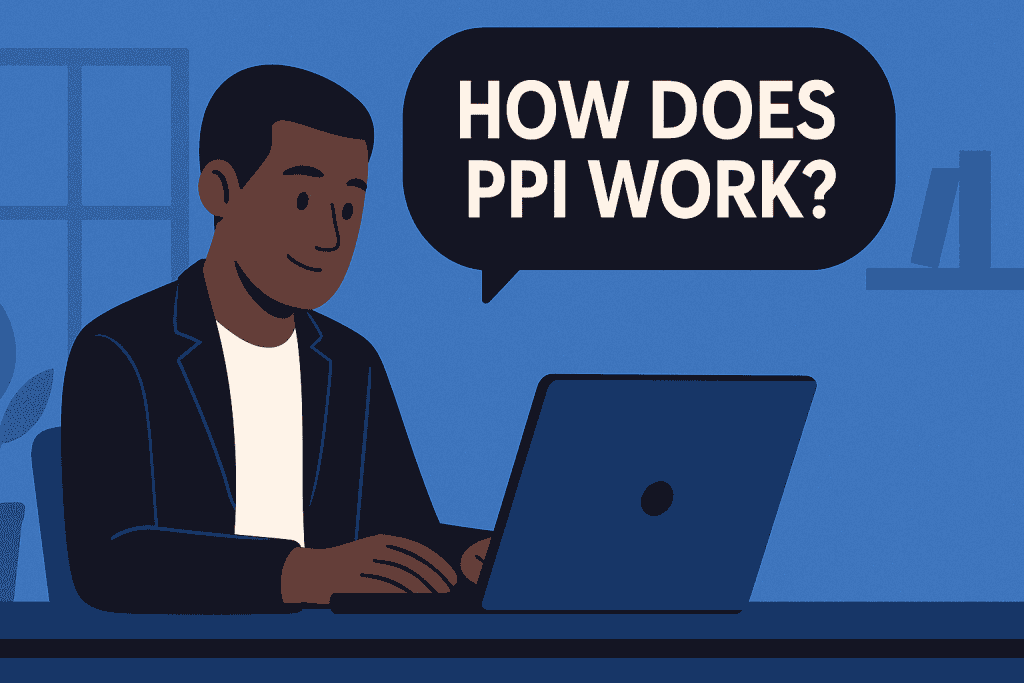In the world of Economic Analysis, few indicators carry as much weight as the PPI, or Producer Price Index. This metric doesn’t just track numbers; it tells a story about production costs, inflation, and the broader economy. By measuring how prices that producers receive for goods and services change over time, Producer Price Index helps analysts, policymakers, and investors see what’s happening behind the scenes.
Why does PPI matter so much? Because it works as a leading signal of inflation. Rising PPI often means consumer prices may follow. For traders, that information is gold—it shapes decisions, informs trading strategies, and influences whether an investment plan succeeds or fails. Understanding Producer Price Index is also critical when navigating uncertainty, especially during volatile events like a market crash. By learning how to interpret and use it, you gain an edge in predicting trends that impact businesses, governments, and personal finances alike.
What is PPI

The PPI stands for Producer Price Index. It measures the average change over time in the selling prices that domestic producers receive for their output. In simpler terms, it tracks inflation at the wholesale level before it reaches consumers.
Producer Price Index is sometimes referred to as the “wholesale price index” and is a close cousin to the Consumer Price Index (CPI). While CPI shows what consumers pay, PPI reflects what producers earn. Together, they create a more complete picture of economic health.
Breaking Down PPI
The concept of Producer Price Index can feel abstract, but it’s easier to grasp when broken into parts.
Measurement of prices.
Producer Price Index captures changes in prices that producers receive for goods and services. This includes raw materials, intermediate goods, and finished products. It doesn’t account for taxes, transportation, or retail markups, making it different from CPI.
Multiple indexes
Producer Price Index isn’t one number. Instead, it includes thousands of indexes that measure prices across industries such as agriculture, manufacturing, and energy. This wide range provides a deeper view of inflationary pressures.
Predictive power
Producer Price Index often serves as an early warning system. If producer prices are rising sharply, it suggests businesses may pass costs onto consumers later, driving inflation.
Application in decision-making
Economists and investors watch PPI closely. For example, a sudden spike in energy prices within PPI could signal higher future costs for companies and consumers. Traders use this information to adjust their trading strategies before the broader market reacts.
Example: Suppose the PPI for lumber increases significantly. This tells us construction companies may soon raise housing prices, which in turn affects consumer spending and mortgage demand. By spotting this early, analysts can prepare forecasts, and businesses can make smarter moves.
Breaking it down, Producer Price Index is not just a statistic—it’s a lens that lets us anticipate ripple effects across the economy.
History
The origins of Producer Price Index go back over a century. The United States first introduced it in 1902 under the name “Wholesale Price Index.” Over time, it expanded to track a broader range of industries, eventually evolving into today’s Producer Price Index.
The Bureau of Labor Statistics (BLS) maintains the PPI in the U.S., releasing updates monthly. With time, many other countries adopted their own versions of PPI, making it a global standard for economic measurement.
| Year | Milestone |
|---|---|
| 1902 | First Wholesale Price Index introduced in the U.S. |
| 1978 | Renamed Producer Price Index |
| 1980s | Expanded to cover services and non-goods sectors |
| 2000s | Adoption of PPI by global economies grows |
| Today | Used worldwide as a key inflation indicator |
Types
The Producer Price Indexhas several variations that help measure inflation in different ways.
Industry-Based Producer Price Index
Tracks average price changes for specific industries such as steel, textiles, or agriculture.
Commodity-Based Producer Price Index
Focuses on the price of goods like oil, gas, or metals, regardless of industry.
Stage-of-Processing Producer Price Index
Measures price changes at different stages of production—raw goods, intermediate products, and finished items.
| Type | Description | Example Use |
|---|---|---|
| Industry-Based | Tracks price shifts by industry | Steel sector inflation |
| Commodity-Based | Focuses on goods across industries | Oil price changes |
| Stage-of-Processing | Breaks down prices by production stage | Monitoring raw material costs |
How does it work?

Producer Price Index works by surveying thousands of producers monthly. These businesses report prices for their goods and services. The Bureau of Labor Statistics (in the U.S.) compiles this data and calculates indexes. By comparing the current index to previous periods, analysts can see whether producer prices are rising, falling, or holding steady. This information then feeds into reports that guide policymakers, businesses, and investors.
Pros & Cons
Producer Price Index provides valuable insights, but like all indicators, it has strengths and weaknesses.
| Pros | Cons |
|---|---|
| Offers early signals of inflation | Doesn’t include consumer-level impact |
| Helps shape policy and investments | Can be complex to interpret |
| Covers wide range of industries | Sensitive to short-term volatility |
| Useful for forecasting economic trends | May not capture service sector fully |
Overall, PPI shines as a predictive tool but requires careful analysis to avoid misinterpretation.
Uses of PPI
The Producer Price Index plays a central role in economics, business, and finance.
Inflation Forecasting
Policymakers use PPI to predict consumer inflation. If producer prices climb, consumer prices often follow.
Business Planning
Companies adjust strategies based on PPI reports. For example, rising raw material costs may prompt businesses to increase prices or change suppliers.
Investment Analysis
Investors use PPI to fine-tune their investment plan. A spike in commodity PPI could influence decisions in energy or industrial stocks.
Government Policy
Governments rely on PPI when designing fiscal and monetary policies. If PPI signals inflation, central banks may raise interest rates.
International Trade
Since Producer Price Index captures domestic price movements, it helps analyze competitiveness in global markets. A rising PPI may indicate higher production costs, affecting export pricing.
Producer Price Index versatility makes it one of the most valuable tools in Economic Analysis. It connects businesses, governments, and investors to the pulse of production costs, enabling smarter, more informed decisions.
Resources
- OneMoneyWay. Report
- Investing Live. Understanding and How to Utilise It for Trading
- SuperMoney. Producer Price Index
- Finance Strategists. Producer Price Index
- Investopedia. Producer Price Index
